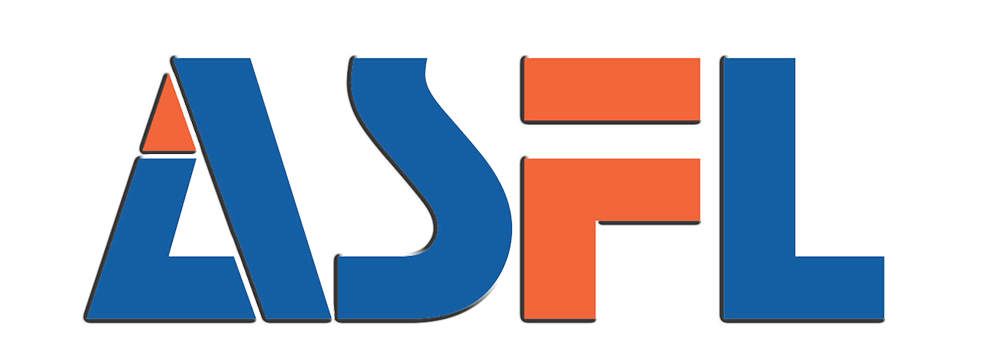Matching Beverage Properties to the Right Filling Technology
How Viscosity and Flow Properties Influence the Choice of Beverage Filling Machine
The thickness of beverages plays a major role in how well filling systems work. Water and clear juices that are really thin (below 15 cP) just pour right through, so gravity fillers work great for them. On the other hand, thicker stuff like smoothies which can range from 500 to 5,000 cP need something stronger. Piston fillers are what manufacturers turn to here to keep things accurate within about 1%, according to recent industry data from last year's material flow studies. Then there are those middle-of-the-road products with viscosities between 50 and 200 cP, think flavored milk for example. These benefit from overflow fillers because they stop all that pesky foaming while still getting pretty close to consistent fills around 98% of the time.
Filling Challenges With Carbonated, Foamy, and Particulate-Laden Beverages
When filling processes go wrong, carbonated drinks can lose around 15 to 20 percent of their CO2 content during production. That's where pressure assisted fillers come in handy. These machines keep things running smoothly by maintaining pressures between 2 and 3 bars throughout the process, which helps maintain those important bubbles we all love so much. Speaking of tricky ingredients, drinks containing particles such as kombucha require special attention. The nozzles need to be at least 3 millimeters in diameter to avoid getting blocked up. This particular design consideration explains why most functional beverage makers (around three out of four) choose custom built pump filler systems for their operations. After all, nobody wants their expensive equipment coming to a grinding halt mid production run.
Matching Filling Principles (Piston, Pump, Overflow) to Product Type
| Filling Method | Optimal Viscosity Range | Accuracy | Best For |
|---|---|---|---|
| Gravity | 1–15 cP | ±2% | Water, clear juices |
| Piston | 200–10,000 cP | ±0.5% | Yogurt drinks, sauces |
| Pressure | 15–500 cP | ±1% | Carbonated beverages |
Selecting the appropriate method based on product characteristics prevents mismatch-related waste, which averages 4.7% annually in inefficient systems (Packing Efficiency Institute 2023).
Gravity vs. Pressure-Based Fillers for Sensitive Liquids: Use Cases and Trade-Offs
Gravity fillers are preferred for shear-sensitive liquids like wines and oils, using gentle flow rates of 0.5–1 m/s to preserve flavor integrity. While pressure-based systems operate 30% faster, they risk disrupting delicate emulsions—a key reason 89% of craft breweries choose gravity setups according to recent filling technology comparisons.
Container Compatibility and Its Effect on Beverage Filling Machine Design
Impact of Container Material, Shape, and Size on Filling Accuracy
What kind of container we use really makes a difference when it comes to how well things get filled. PET and HDPE bottles act completely different compared to stiff glass containers because they bend and flex. This means production lines need special setups just for these softer materials. When containers aren't rigid enough, they tend to line up wrong during processing. Some plants solve this problem using those fancy star wheel systems designed specifically for flexible packaging. According to recent market research from 2023, around one out of every ten stoppages on beverage filling lines happens simply because the wrong type of container was used for the job.
Size variations also impact accuracy—fillers designed for 500 mL bottles may underfill 330 mL units without dynamic volume adjustment. Irregularly shaped containers, common in craft packaging, disrupt flow dynamics and cause up to ±3% deviation in gravity-based systems.
Adapting Beverage Filling Machines for Bottles, Cans, and Cartons
Today's filling equipment handles all sorts of containers thanks to their modular setup. For bottles, most production lines come with adjustable neck grippers that can be fine tuned for different sizes, plus height settings that operators can program as needed. When it comes to cans, manufacturers rely on pressurized heads during filling to keep carbonation levels stable throughout the process. The situation gets even more interesting with cartons. These require special hybrid systems that combine volumetric measurement with aseptic sealing technology. According to recent industry data from Verified Market Reports back in 2023, these combined systems actually boost efficiency by around 35% compared to regular machines when dealing with thick functional drinks like protein shakes or nutritional supplements.
Key adaptations include:
- Material-specific conveyors: Stainless steel for glass; low-friction belts for plastics
- Quick-change tooling: Nozzles and guides swapped in under 15 minutes
- Height compensation: Laser sensors auto-adjust filler heads for containers ranging from 50 mm to 400 mm
These innovations enable manufacturers using modular filling systems to achieve 99.2% line efficiency across mixed-container runs.
Sizing Your Beverage Filling Machine for Current and Future Production Needs
Aligning Containers-Per-Hour Output With Business Scale and Growth Projections
Choosing the right throughput means balancing current demand with 12–24 month growth projections. Startups often underestimate future needs, selecting 2,000-containers/hour systems only to face 40% undercapacity within 18 months (Beverage Production Report 2023). Use this formula to determine capacity requirements:
(Peak hourly orders) × (1.5 safety margin) + (25% annual growth buffer)
For expanding medium-scale operations, semi-automatic systems with modular upgrades allow gradual scaling from 5,000 to 15,000 units/hour without full equipment replacement.
Case Study: Small Brewery Scaling Up With Semi-Automatic Filling Systems
Craft brewery Hops Valley achieved 300% production growth over three years using a configurable rotary filler:
| Year | Output | Machine Configuration | Labor Required |
|---|---|---|---|
| 1 | 2K cans/hr | Single-head semi-auto + manual QC | 4 operators |
| 2 | 5K cans/hr | Added second filler head | 5 operators |
| 3 | 8K cans/hr | Integrated automatic capping | 3 operators |
This phased investment reduced capital costs by 62% compared to an upfront fully automated solution.
Throughput Trade-Offs Between Manual, Semi-Automatic, and Fully Automatic Beverage Filling Machines
| Machine Type | Output Range | Labor Cost/1K Units | Changeover Time |
|---|---|---|---|
| Manual | 200–500 units/hr | $8.50 | 5–10 minutes |
| Semi-Automatic | 800–5,000 units/hr | $3.20 | 15–30 minutes |
| Fully Automatic | 4,000–24K units/hr | $0.90 | 45–90 minutes |
High-mix producers favor semi-automatic systems for flexibility, while single-SKU operations gain maximum efficiency from fully automated lines. Always buffer at least 20% above peak demand to handle seasonal spikes without overtime.
Balancing Automation Level with Operational Efficiency and Cost
Cost-benefit analysis of manual vs. fully automatic liquid filling machines
When looking at production equipment, manufacturers need to balance upfront expenses with what they'll save over time. The semi auto options sit somewhere between manual and full automation, typically priced between twenty thousand to seventy grand. A recent look at return on investment from automation shows that when facilities run over five thousand units an hour, going fully automatic pays off within eighteen to thirty months. Let's put this into perspective: running manual systems costs around twelve to eighteen dollars each hour for every worker, while automated setups cut down on staffing requirements by nearly sixty percent thanks to features like self cleaning nozzles and built in capping mechanisms. These savings stack up fast for high volume operations.
Labor reduction and consistency gains with automated beverage filling systems
Consistency gets a major boost with automation. High end filling machines can hit around plus or minus 0.5% accuracy in volume measurements, while manual operations typically drift within a much wider range of plus or minus 3%. According to industry data from last year, juice bottling companies reported that their automated systems saved them about 1.2% in product giveaways across all volumes processed. Even better, these same facilities saw an impressive drop in recall incidents related to contamination issues down to just 16% of what they used to be. The initial investment is no small matter either, usually running between fifty thousand and over one hundred fifty thousand dollars for proper setup. But once installed, these systems run nonstop day after day, which means production capacity jumps anywhere from double to triple what it was before. And for those who need to switch between different container sizes frequently, modern servo driven equipment with preloaded recipe settings makes transitions happen roughly ninety percent quicker than older methods did.
Ensuring Precision and Flexibility in Modern Beverage Filling Operations
The Role of Volumetric, Net Weight, and Vacuum Filling Technologies in Precision
Precision in modern filling relies on three core technologies:
- Volumetric filling uses fixed cavities for consistent measurement, best suited for stable liquids like juices.
- Net weight systems adjust dynamically for density fluctuations, ideal for protein shakes or nut milks.
- Vacuum fillers minimize oxidation and foaming in carbonated drinks, maintaining ±1% consistency even with frothy formulations.
Industry Benchmarks: ±0.5% Accuracy in High-End Piston Fillers
Top-tier piston fillers now achieve ±0.5% volume consistency (Ponemon 2023), equating to less than 2 mL variance in a 400 mL bottle. This level of precision reduces product giveaway by up to $740k annually for large-scale producers and ensures compliance with FDA labeling standards.
Trend: Integration of Sensors and Feedback Loops in Beverage Filling Machines
Real-time monitoring detects viscosity shifts exceeding 5%, automatically adjusting filler speed or valve position to sustain accuracy. These intelligent systems reduce startup waste by 62% when transitioning between products like kombucha and cold brew coffee, according to recent studies.
Modular Designs and Customization for Diverse Products Like Craft Sodas and Functional Drinks
Leading platforms offer swappable nozzle arrays capable of handling 3-mm chia seeds in wellness drinks or 8-bar carbonation in craft sodas. Flexible systems now support format changes 87% faster than 2020 models, enabling small-batch producers to run 200 mL energy shots and 1L cold-pressed juices on the same line.
Frequently Asked Questions (FAQ)
What are the key factors to consider when selecting a beverage filling machine?
When selecting a beverage filling machine, consider viscosity, carbonation level, container material, shape, and size. These factors dictate the type of filling technology that will ensure accurate fill levels and minimize wastage.
How does the material and shape of a container affect filling accuracy?
Flexible materials like PET and HDPE can cause misalignment during filling, potentially leading to inaccuracies. Irregular shapes associated with craft packaging can disrupt flow dynamics and result in deviations in gravity-based systems.
What advancements have been made in modular filling machine designs?
Advancements in modular filling systems include material-specific conveyors, quick-change tooling, and height compensation. These allow for rapid adjustments between different container types and sizes, improving production efficiency.
How can startups determine the appropriate throughput for their filling machine?
Startups should balance current demand with future growth projections using the formula: (Peak hourly orders) × (1.5 safety margin) + (25% annual growth buffer) to ensure adequate capacity.
What are the cost benefits of fully automated filling systems compared to manual options?
Fully automated filling systems reduce labor costs, increase consistency, and achieve higher accuracy in volume measurements compared to manual systems. They also allow for faster transitions between product lines.
Table of Contents
-
Matching Beverage Properties to the Right Filling Technology
- How Viscosity and Flow Properties Influence the Choice of Beverage Filling Machine
- Filling Challenges With Carbonated, Foamy, and Particulate-Laden Beverages
- Matching Filling Principles (Piston, Pump, Overflow) to Product Type
- Gravity vs. Pressure-Based Fillers for Sensitive Liquids: Use Cases and Trade-Offs
- Container Compatibility and Its Effect on Beverage Filling Machine Design
- Sizing Your Beverage Filling Machine for Current and Future Production Needs
- Balancing Automation Level with Operational Efficiency and Cost
- Ensuring Precision and Flexibility in Modern Beverage Filling Operations
- Industry Benchmarks: ±0.5% Accuracy in High-End Piston Fillers
- Trend: Integration of Sensors and Feedback Loops in Beverage Filling Machines
- Modular Designs and Customization for Diverse Products Like Craft Sodas and Functional Drinks
-
Frequently Asked Questions (FAQ)
- What are the key factors to consider when selecting a beverage filling machine?
- How does the material and shape of a container affect filling accuracy?
- What advancements have been made in modular filling machine designs?
- How can startups determine the appropriate throughput for their filling machine?
- What are the cost benefits of fully automated filling systems compared to manual options?





